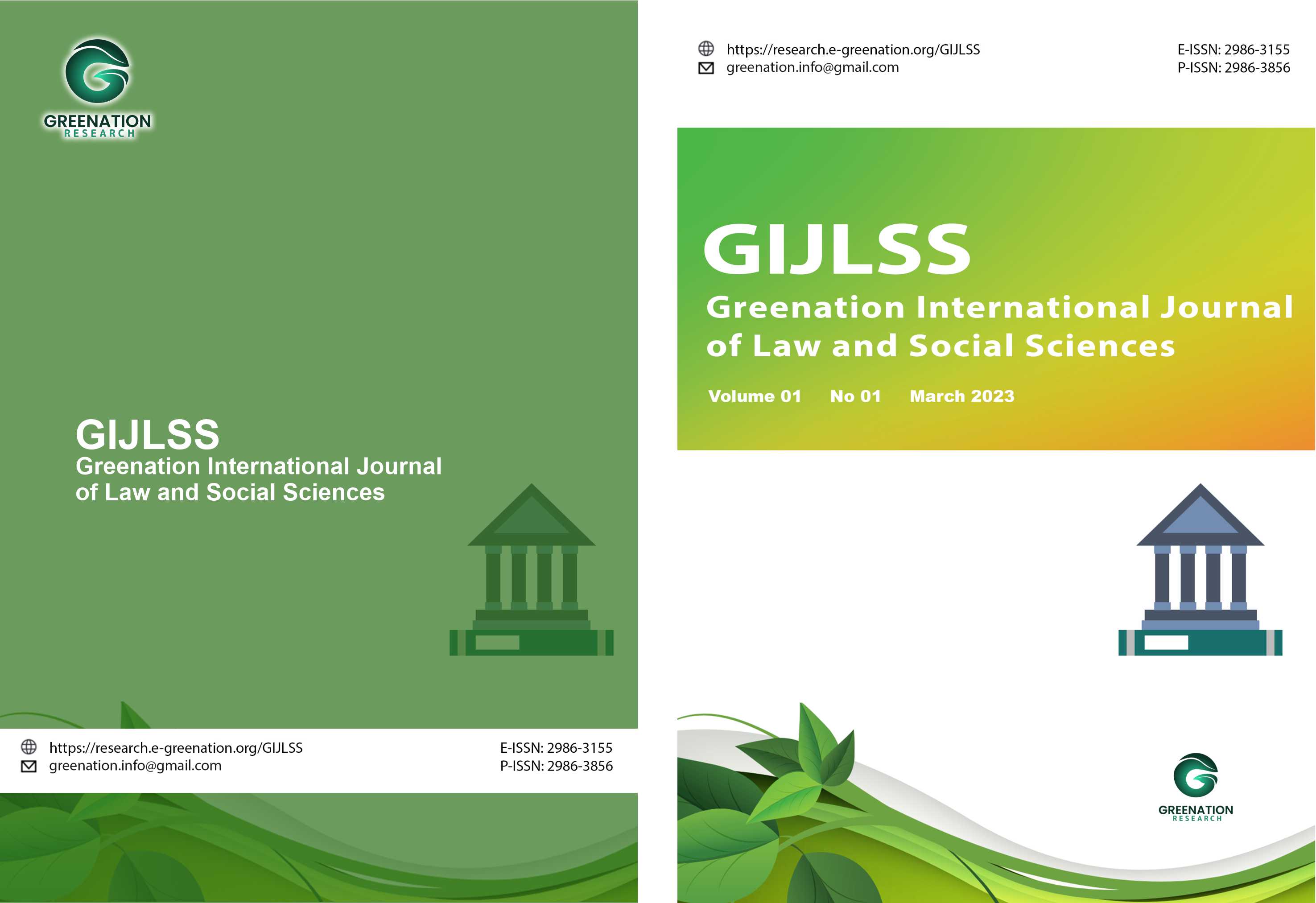The Transformation of Criticism into a Digital Mob and the Role of the Bandwagon Effect in Cyberbullying Against the Indonesian Police on Instagram
DOI:
https://doi.org/10.38035/gijlss.v3i2.485Keywords:
Cyberbullying, Bandwagon Effect, Cyber Law, Instagram, Police, Legal ProtectionAbstract
The phenomenon of cyberbullying against members of the Indonesian National Police (Polri) on social media, especially Instagram, shows an escalation pattern from public criticism to massive collective digital attacks. This phenomenon is often triggered by a psychological effect known as the bandwagon effect, where netizens tend to join in the flow of mass insults without understanding the context of the event as a whole. This study aims to analyze how the bandwagon effect contributes to the escalation of cyberbullying against police officers and examine the legal protection available based on current laws and regulations. The method used is a normative legal approach by examining Law No. 1 of 2024 concerning the Second Amendment to the ITE Law, the New Criminal Code (Law No. 1 of 2023), and various internal police regulations, including Perpolri No. 7 of 2022 concerning the Code of Professional Ethics. The results of the analysis show that although there are legal instruments that can be used to ensnare perpetrators of cyberbullying, there are no norms that specifically regulate digital collective actions, such as the bandwagon effect. The main challenges in law enforcement include proving the perpetrator's intention, limited resources in digital investigations, and the gap between the development of communication technology and legal responses. Therefore, a more comprehensive cyber regulatory reform is needed, and an increase in the digital literacy of the community to create a healthy, fair, and civilized public space, including in the relationship between society and state institutions such as the Police.
References
Alhakim, A. G. (2023). Kajian Yuridis Sanksi Pidana Terhadap Tindak Pidana Hate Speech Cyberbullying Di Indonesia. Legalitas: Jurnal Hukum, 15(2), 158-165.
Anton, R. Y. (2023). PERTANGGUNGJAWABAN PIDANA TERHADAP PELAKU TINDAK PIDANA PENCEMARAN NAMA BAIK DAN PENGHINAAN TERHADAP PEJABAT NEGARA MELALUI MEDIA SOSIAL. IUS FACTI: Jurnal Berkala Fakultas Hukum Universitas Bung Karno, 1(2), 180-196.
Arifin, Z. F. (2025). Implikasi Hukum Perubahan Kedua Undang-Undang Informasi dan Transaksi Elektronik: Menyeimbangkan Kebebasan Berpendapat dan Partisipasi Publik dalam Demokrasi Digital: Legal Implications of The Second Amendment to The Electronic Information and Transaction. LITIGASI, 26(1), 192-227.
Bambang, J. U. (2025). Kebebasan Berbicara di Media Sosial: Antara Regulasi dan Ekspresi. Student Research Journal, 3(1), 87-96.
Daeng, A. N. (2024). Penegakan Kode Etik Polisi Terhadap Pengaruh Citra Institusi Kepolisian. Borobudur Law and Society Journal, 3(2), 68-78.
Darmadi, N. S. (2024). Tinjauan Yuridis Kode Etik Kepolisian Republik Indonesia Dalam Penegakan Hukum Di Indonesia. Jurnal Ilmiah Sultan Agung, 3(3), 298-309.
Djuna, K. &. (2022). Pemanfaatan Fenomena The Bandwagon Effect Pada Generasi Muda Indonesia. SANISA: Jurnal Kreativitas Mahasiswa Hukum, 2(1), 18-23.
Faikaroh, F. (2021). Kekerasan Verbal Dalam Media Sosial. Jurnal Penelitian, Pendidikan, dan Pembelajaran, 16(24).
Gabur, D. A. (2023). Etika Komunikasi di Era Digital dalam Fenomena Hate Speech Netizen Indonesia (Tinjauan dari Perspektif Etika Komunikasi Habermas). Jurnal Poros Politik, 5(2), 1-9.
Giumetti, G. W. (2022). Cyberbullying via social media and well-being. Current opinion in psychology, 45, 101314.
Hariyawan, S. &. (2020). Penegakkan Hukum Terhadap Tindak Pidana Ujaran Kebencian (Hate Speech). Jurnal Juristic, 1(01), 41-51.
Nasution, L. (2020). Hak kebebasan berpendapat dan berekspresi dalam ruang publik di era digital. Adalah, 4(3), 37-48.
NATASHA, O. L. (2023). STUDI KOMPARATIF PENGATURAN TINDAK PIDANA PENGHINAAN TERHADAP PEJABAT NEGARA MENURUT KUHP DAN UNDANG-UNDANG INFORMASI DAN TRANSAKSI ELEKTRONIK. Ensiklopedia of Journal, 6(1), 447-454.
Noija, J. I. (2024). Kebijakan Krimimnal Perbuatan Ujaran Kebencian (Hate Speech) Melalui Media Sosial Menurut Hukum Pidana. PATTIMURA Law Study Review, 2(1), 139-155.
Paus, S. P. (2025). Perlindungan Hukum terhadap Hak Pegawai Negeri Sipil dalam Sistem Kepegawaian Indonesia. Media of Law and Sharia, 6(2).
Putri, E. &. (2024). Ujaran Kebencian Melalui Komentar Instagram Sebagai Kekerasan Politik. Jurnal ISIP: Jurnal Ilmu Sosial dan Ilmu Politik, 21(1), 45-65.
Saparina, A. S. (2021). Implementasi nilai-nilai Pancasila melalui praktik kebebasan berpendapat di Indonesia. Jurpis: Jurnal Pendidikan Ilmu Sosial, 18(1), 49-62.
Setiawan, M. N. (2021). Mengkritisi Undang-Undang ITE Pasal 27 Ayat (3) dilihat dari Sosio-Politik Hukum Pidana Indonesia. DATIN Law Jurnal, 2(1), 1-21.
Supiyati, S. (2020). Penerapan Pasal 27 Ayat 3 Undang-undang No 19 Tahun 2016 Tentang Informasi Dan Transaksi Elektronik Terhadap Tindak Pidana Pencemaran NAMA Baik Melalui Internet Sebagai Cybercrime Di Hubungkan Dengan Kebebasan Berekspresi. Pamulang Law Review, 2(1), 23-36.
Zatrahadi, M. F. (2025). Mengikuti Arus; Mengapa Kita Mudah Terpengaruh Tren Dan Opini Orang Lain. Klaten: Nas Media Pustaka.
Zempi, C. N. (2023). Analisis Peran Media Sosial Dalam Pembentukan Pengetahuan Politik Masyarakat. Ekspresi Dan Persepsi: Jurnal Ilmu Komunikasi, 6(1), 116-123.
Downloads
Published
How to Cite
Issue
Section
License
Copyright (c) 2025 Arie Agustyanto Yos, Joko Setiono, Ilham Prisgunanto

This work is licensed under a Creative Commons Attribution 4.0 International License.
Copyright :
Authors who publish their manuscripts in this journal agree to the following conditions:
- Copyright in each article belongs to the author.
- The author acknowledges that the Greenation International Journal of Law and Social Sciences (GIJLSS) has the right to be the first to publish under a Creative Commons Attribution 4.0 International license (Attribution 4.0 International CC BY 4.0).
- Authors can submit articles separately, arrange the non-exclusive distribution of manuscripts that have been published in this journal to other versions (for example, sent to the author's institutional repository, publication in a book, etc.), by acknowledging that the manuscript has been published for the first time at GIJLSS.
























